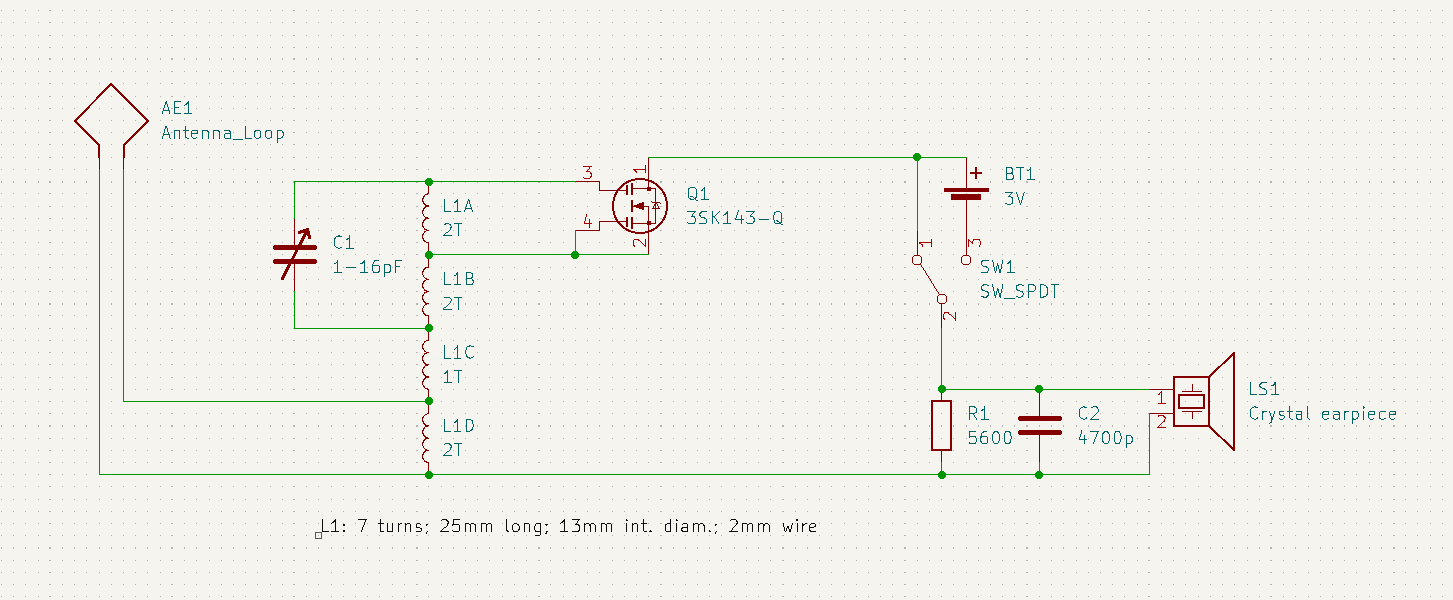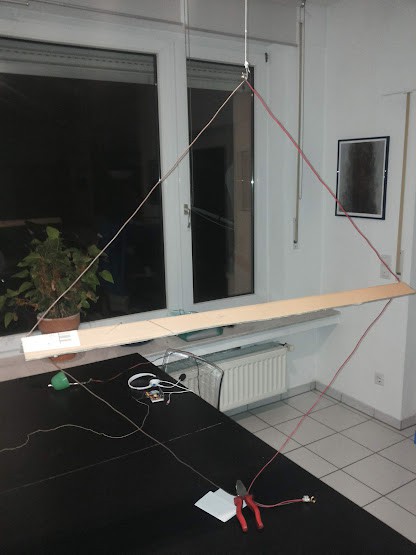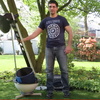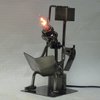Building a crystal radio is an experience that any hacker should try. Listening to music coming from an unpowered device really feels like magic!
As a teenager, I read in a schoolbook about such devices. It was love at first sight. However, after several failed attempts and without sufficient information available, I finally gave up.
After many years I still had that worm in my mind and started searching the web for information. I stepped upon the TheRadioBoard.com forum: a gold mine of information!
I read about the projects of incredible radio gurus and discovered this fascinating world. In particular, I found the work of Billy Cheung, a genius and artist with crystal radios!
By the way, it is very unfortunate that the website went down and its database was lost. I was really an incredible source of inspiration.
But let's go back to the project.
An interesting thing I discovered during my search was that you could also listen to FM stations with the same circuit you can use for AM. This discovery is a game-changer because it is not easy to design an FM detector that needs no power, and - at least in Europe - it is unlikely to live close to an AM transmitting station (there is only a handful still operational).
[Brief explanation]
In an AM receiver, the envelope detector produces an output proportional to the peak voltage of the incoming waveform, which is modulated in amplitude (hence the name).
In the case of a frequency-modulated incoming waveform, whose frequency changes with the intensity of the modulating signal while the amplitude stays the same, the envelope detector should not work.
However, if you put the frequency of the radio station of interest on the slope of the tank frequency response instead of its peak, you will be able to decode it nevertheless. This happens because, since the tuning of the incoming signal changes slightly as its frequency changes (hence with its modulating signal), the resulting waveform in the LC tank will results modulated in amplitude, too.
For this approach to work, it is essential that the Q factor (a measure of selectivity, i.e. how narrowly peaked around the chosen frequency the frequency response of the circuit is) of the tank circuit (the LC circuit that selects the receiver working frequency) is pretty high. For this reason, using high-quality L and C components (as close to ideal components as possible) is paramount.
[/Brief explanation]
Based on the experiments done and the circuits tested, I built this circuit:

It employs an SMD quasi-zero-volt MOSFET (datasheet attached) marked 3DQ (but its real name is 3SK143-Q).
Someone would say this is not a crystal radio because it does not employ a diode. I personally disagree as - in my understanding - a crystal radio is just a receiver that does not require power. The MOSFET here does the same job as the old galena crystal of rectifying the incoming waveform.
The potential of this electronic component is well explained by Billy in his blog:
http://billiydiy.blogspot.com/2020/09/what-is-3dq-as-am-sw-and-fm-radio.html
As far as I understand, this is how it works (crystal receiver mode - SPDT switch connecting pins 1 and 2):
L1A and L1B, together with C1, are the LC tank. It resonates on 100MHz with a 5pF capacitor; hence a 3-8 pF would be perfect. I found a cute and high-quality (silver-plated plates) 16pF capacitor on eBay that was pretty ok for the task.
As the gate and the source of the MOSFET are connected across L1A, the energy stored in L1B, L1C, and L1D will be allowed to reach the earpiece only during the positive part of the incoming wave. R1 and C2 work like kind of a peak detector.
Crystal radios require a proper antenna to work. I used a big loop hung to the ceiling was pretty effective.

Moreover, you need to use high-quality components for the tank circuit to achieve a sufficiently high Q factor. In my case, a tiny air variable capacitor and a silver-plated 2mm copper coil did the trick (beware:...
 Andrea Console
Andrea Console

I completely agree! A crystal set is indeed a wonderful introduction to electronics. It's a simple yet ingenious design that allows beginners to grasp fundamental concepts.
It's unfortunate when key components like transistors become discontinued, as it can pose a challenge for beginners who might not have access to specialized parts. Exploring alternative transistors or even considering depletion-mode MOSFETs is a great suggestion.
For those looking to delve deeper into radio frequency circuits, experimenting with 1/4-wave lines, striplines, cavities, or helical resonators can be an exciting next step. The Radio Amateur's Handbook is an excellent resource for finding examples and designs for these higher-Q circuits.
Thinking of these components as methods to "fatten up" the coil to make it shorter is a clever way to conceptualize it. Additionally, using common materials to construct these resonators is a practical approach that can make these projects accessible to a wider audience.
Thank you for sharing this insightful information! If you have any further questions or would like to discuss electronics or any other topic, feel free to let me know. Yes this is very easy to take this all info about him if you want to take all info about that then this is very intresting behave all about this site: http://pppcalculator.net/